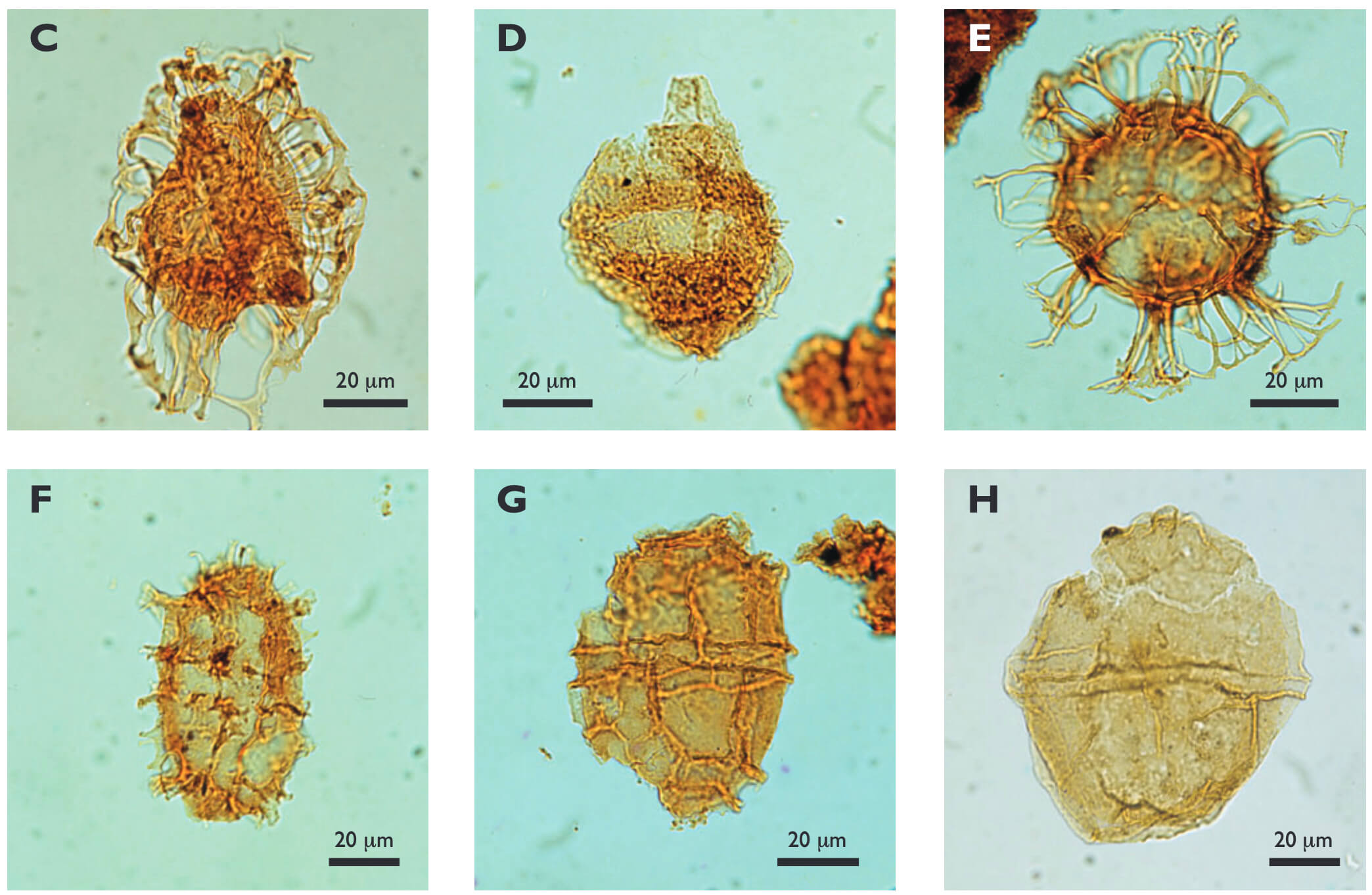
How to Cite
Share
Abstract
Upper Jurassic – lowermost Cretaceous marine mudstones represent the most significant source of hydrocarbons in the Central and Northern North Sea. Of particular importance in the Danish sector of the Central Graben is a succession of radioactive ‘hot shales’ referred to the Bo Member, in the upper levels of the Farsund Formation (Kimmeridge Clay Formation equivalent). This mudstone-dominated succession is typically 15–30 m thick and has a total organic carbon (TOC) content of 3–8%, though locally exceeding 15%. Although truncated on some structural highs, the Bo Member is a persistent feature of the Danish Central Graben. Lateral variation in both thickness and organic richness is attributed to intrabasinal structural topography and to the location of sediment input centres. Detailed study of the dinoflagellate cyst biostratigraphy of 10 wells indicates that the onset of enhanced organic carbon burial began in the middle–late Middle Volgian in this portion of the Central Graben. The Bo Member, representing the peak of organic carbon enrichment, is largely of Early Ryazanian age. Core data (Jeppe-1, E-1 wells) indicate that the organic-rich shales of the Bo Member are not wholly of hemipelagic origin, as commonly assumed, but may locally be dominated by fine-grained turbidites. Absence of bioturbation, well-preserved lamination and high TOC values suggest that bottom waters were predominantly anoxic although the presence of in-situ benthic bivalves at discrete horizons in the E-1 well suggests that suboxic conditions prevailed on occasion. The Bo Member is a good to very good source rock, showing very high pyrolysis yields (10–100 kg HC/ton rock) and Hydrogen Index (HI) values in the range 200–600. In particular, the Bo Member is characterised by an abundance of 28,30 bisnorhopane (H28), a compound that is indicative of anoxic environments. These new data from the Danish sector of the Central Graben are compatible with the model of Tyson et al. (1979) in which the accumulation of organic-rich mudstones was controlled primarily by bottom-water anoxia beneath a stratified watermass. A number of factors probably contributed to the development of watermass stratification, both intrinsic such as the tectonic morphology of the graben system and extrinsic including climate and sea-level stand.
How to Cite
Share
Downloads
Editors: Jon R. Ineson and Finn Surlyk
The Jurassic rocks of Denmark and East Greenland record the evolution of two discrete portions of the Mesozoic rift complex, now separated by the North Atlantic Ocean. The Jurassic of Denmark and adjacent areas occurs mostly in the subsurface and research has thus focussed [...]










